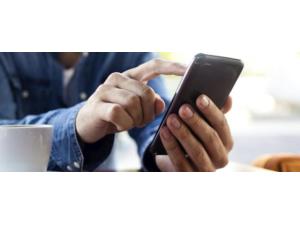



Date:21/05/20
 Nokia announced it has achieved the world’s fastest 5G speeds in its Over-the-Air (OTA) network in Dallas, Texas.
Nokia announced it has achieved the world’s fastest 5G speeds in its Over-the-Air (OTA) network in Dallas, Texas.
Nokia, utilizing 800 MHz of millimeter wave 5G spectrum and Dual Connectivity (EN-DC) functionality, achieved 5G speeds of up to 4.7 Gbps in tests performed on base station equipment being deployed in major U.S. carriers’ commercial networks.
The record speed was achieved by combining eight 100 MHz channels of millimeter wave spectrum on the 28 GHz and 39GHz bands, providing 800 MHz of bandwidth, and 40 MHz of LTE spectrum using the EN-DC functionality available on Nokia’s AirScale solution.
EN-DC allows devices to connect simultaneously to 5G and LTE networks, transmitting and receiving data across both air-interface technologies. This means devices can achieve a higher throughput than when connecting to 5G or LTE alone. The speeds were achieved on both 5G cloud-based (vRAN) and classic baseband configurations.
“8-component carrier aggregation in the millimeter wave domain shows that there is more than massive MIMO and open RAN to not only truly deliver the promise of commercial 5G, but also pave the way for future Terahertz system,” Stephane Teral, chief analyst at LightCounting Market Research, said.
“It demonstrates the confidence operators have in our global end-to-end portfolio and the progress we have made to deliver the best possible 5G experiences to customers. We supply our mmWave radios to all of the major US carriers,” Tommi Uitto, president of Mobile Networks at Nokia, said.
Nokia achieves world’s fastest 5G speeds in Dallas
 Nokia announced it has achieved the world’s fastest 5G speeds in its Over-the-Air (OTA) network in Dallas, Texas.
Nokia announced it has achieved the world’s fastest 5G speeds in its Over-the-Air (OTA) network in Dallas, Texas.Nokia, utilizing 800 MHz of millimeter wave 5G spectrum and Dual Connectivity (EN-DC) functionality, achieved 5G speeds of up to 4.7 Gbps in tests performed on base station equipment being deployed in major U.S. carriers’ commercial networks.
The record speed was achieved by combining eight 100 MHz channels of millimeter wave spectrum on the 28 GHz and 39GHz bands, providing 800 MHz of bandwidth, and 40 MHz of LTE spectrum using the EN-DC functionality available on Nokia’s AirScale solution.
EN-DC allows devices to connect simultaneously to 5G and LTE networks, transmitting and receiving data across both air-interface technologies. This means devices can achieve a higher throughput than when connecting to 5G or LTE alone. The speeds were achieved on both 5G cloud-based (vRAN) and classic baseband configurations.
“8-component carrier aggregation in the millimeter wave domain shows that there is more than massive MIMO and open RAN to not only truly deliver the promise of commercial 5G, but also pave the way for future Terahertz system,” Stephane Teral, chief analyst at LightCounting Market Research, said.
“It demonstrates the confidence operators have in our global end-to-end portfolio and the progress we have made to deliver the best possible 5G experiences to customers. We supply our mmWave radios to all of the major US carriers,” Tommi Uitto, president of Mobile Networks at Nokia, said.
Views: 379
©ictnews.az. All rights reserved.Similar news
- Azerbaijani project to monitor disease via mobile phones
- Innovative educational system to be improved under presidential decree
- NTRC prolongs license of two TV and radio organizations for 6 years
- Azerbaijan establishes e-registry for medicines
- Azerbaijani museum introduces e-guide
- Nar Mobile opens “Nar Dunyasi” sales and service center in Siyazan city
- International conference on custom electronic services held in Baku
- OIC secretary general to attend COMSTECH meeting in Baku
- Azerbaijan develops earthquake warning system
- New law to regulate transition to digital broadcasting in Azerbaijan
- Azerbaijani State Social Protection Fund introduces electronic digital signature
- Intellectual traffic management system in Baku to be commissioned in December
- Tax Ministry of Azerbaijan started receiving video-addresses
- World Bank recommends Azerbaijan to speed up e-service introduction in real estate
- Azerbaijan to shift to electronic registration of real estate





















